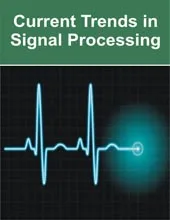
Abhay Kumar Pandit,

Saurav Kumar,

Manisha Sharma,
- Student HMR Institute of Technology and Management, New Delhi, India
- Student HMR Institute of Technology and Management, New Delhi India
- Associate Professor HMR Institute of Technology and Management, New Delhi, India
Abstract
With their ability to use natural language processing to enable hands-free technological engagement, voice assistants have become an indispensable aspect of modern living. This paper describes how to create a voice assistant with the Python programming language by utilizing its powerful libraries and frameworks for task automation, speech recognition, and natural language processing. The system architecture makes use of several Python modules, including PyAudio, NLTK (Natural Language Toolkit), and Speech Recognition, to process audio and interpret user inputs effectively. One of the hottest subjects in the modern world is voice assistants, commonly referred to as voice-based artificial intelligence (AI). These are programs that listen to human vocal instructions and reply, allowing for human-computer or device connection. These days, voice assistants are widely available and highly helpful in these hectic times. Due to the global epidemic that has forced people to use smartphones, voice assistants have become ubiquitous today, with Google Assistant being the most widely used. Even 5-year-old children can use it. Alexa from Amazon is a formidable competitor to Google Assistant and can do a wide range of tasks, from providing entertainment to controlling the Internet of Things (IoT) devices in homes. One of its best qualities is that it will benefit those with physical disabilities as well. For instance, those who are unable to walk can use the Internet of Things function to maintain and run household appliances. Thus, we usually try to create a voice assistant that is as user-friendly as the other voice assistants that are popular right now.
Keywords: Voice Assistant, Speech Recognition, Text-to-Speech, Internet of Things, Python
[This article belongs to Current Trends in Signal Processing(ctsp)]
Browse Figures
References
- Kang, M., Kim, S., & Lee, J. (2022). A Study on Voice Assistant Based User Interface Design Guidelines for Smart Home Appliances. Journal of Convergence Information Technology (JCIT), 17(2).
- Liu, Y., Yang, F., & Li, S. (2016). Research on natural language processing in intelligent voice systems. In 2016 IEEE 2nd International Conference on Computer and Communications (ICCC) (pp. 2412-2415). IEEE.
- Lee, J., Kim, S., & Han, J. (2018). Voice interaction: Potential and implications of the new interface mode on smartphones. Computers in Human Behavior, 80, 274-283.
- Hasan, M., Alsaeedi, M., & Alshomrani, S. (2022). A Comparative Study of Voice Assistants: Amazon Alexa, Apple Siri, Google Assistant, and Microsoft Cortana. In Proceedings of the International Conference on Future Networks and Distributed Systems (ICFNDS’22).
- Alpaydin, E. (2020). Introduction to machine learning. MIT Press.
- Jurafsky, D., & Martin, J. H. (2019). Speech and language processing. Pearson Education India.
- Ribeiro, B. N., Santos, R. L., & Soares, S. (2020). A survey on text-to-speech synthesis systems. Natural Computing, 19(2), 287-312.
- Li, J., & Li, H. (2022). Voice Assistant Technology: Applications, Challenges, and Opportunities. IEEE Transactions on Emerging Topics in Computing, 1-1.
- AI-based Desktop Voice Assistant for Visually Impaired Persons, 2023 Second International Conference on Electronics and Renewable Systems (ICEARS)
- Easwara Moorthy, Aarthi & Vu, Kim-Phuong, “Voice Activated Personal Assistant: Acceptability of Use in the Public Space” HIMI 2014. Lecture Notes in Computer Science, vol 8522. Springer, pp. 324-334, 10.1007/978 3-319-07863-2_32.
- Rajdip Paul, Nirmalya Mukhopadhya “A Novel Python-based Voice Assistance System for reducing the Hardware Dependency of Modern Age Physical Servers”. IRJET, Volume: 08 Issue: 05, May 2021, e-ISSN: 2395-0056, ISSN: 2395-0072.
- V Geetha & Gomathy, C K & Kottamasu, Manasa & Kumar, Nukala. (2021). The Voice Enabled Personal Assistant for Pc using Python. International Journal of Engineering and Advanced Technology. 10. 162-165. 10.35940/ijeat.D2425.0410421.
- A.M.Sermakani, J.Monisha, G.Shrisha, G.Sumisha, “Creating Desktop Speech Recognization Using Python Programming.” IJARCCE, Vol. 10, Issue 3, March 2021, ISSN (Online), pp.129-134.
- Sprengholz, Philipp & Betsch, Cornelia “Ok Google: Using virtual assistants for data collection in psychological and behavioral research” (2021) Behavior Research Methods. DOI:10.3758/s13428-021-01629-y
- Zwakman, Dilawar Shah & Pal, Debajyoti & Triyason, Tuul & Arpnikanondt, Chonlameth. (2021). Voice Usability Scale: Measuring the User Experiencewith Voice Assistants

Current Trends in Signal Processing
| Volume | 14 |
| Issue | 01 |
| Received | May 31, 2024 |
| Accepted | June 3, 2024 |
| Published | June 15, 2024 |

